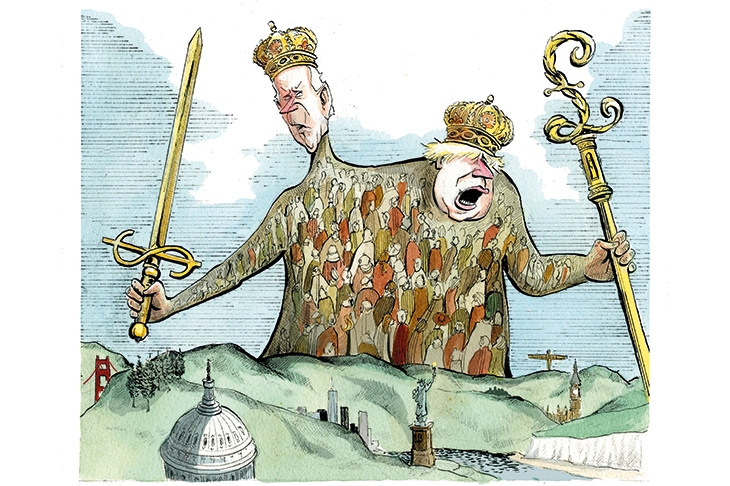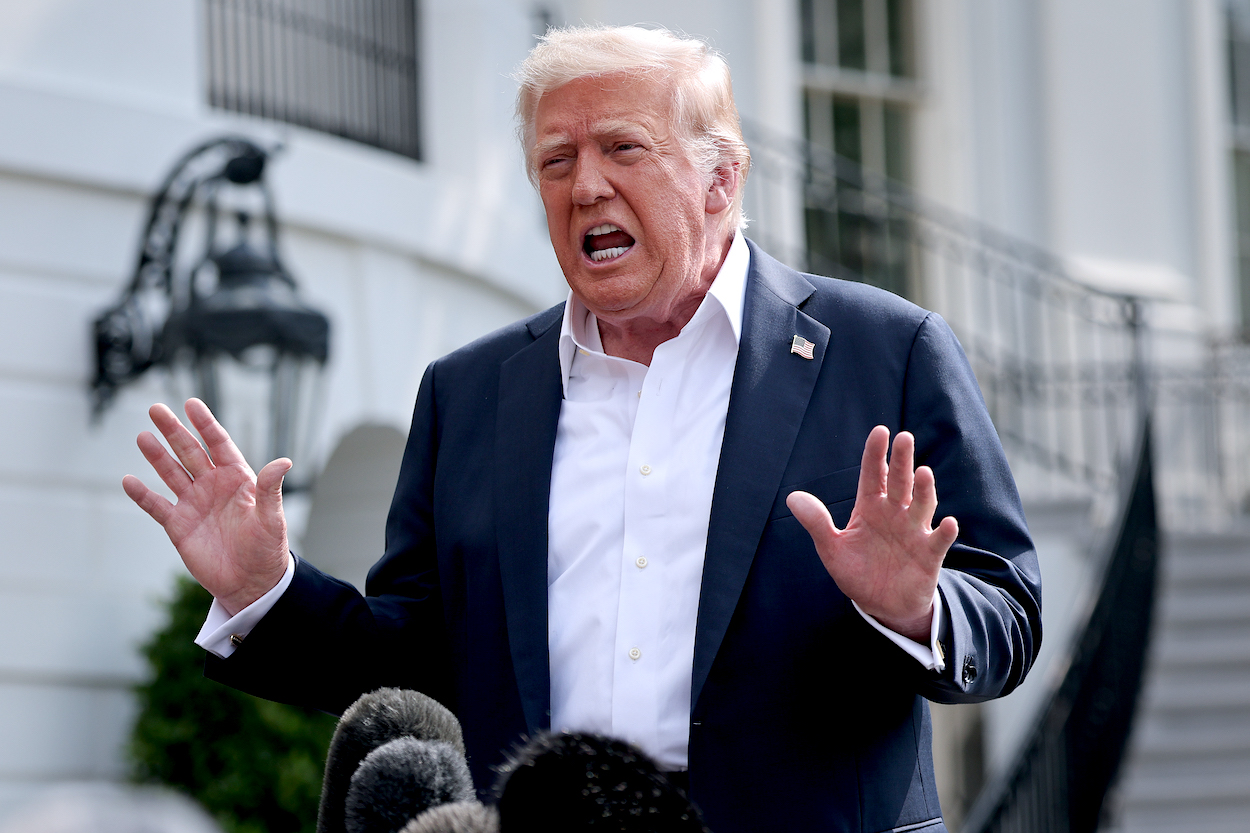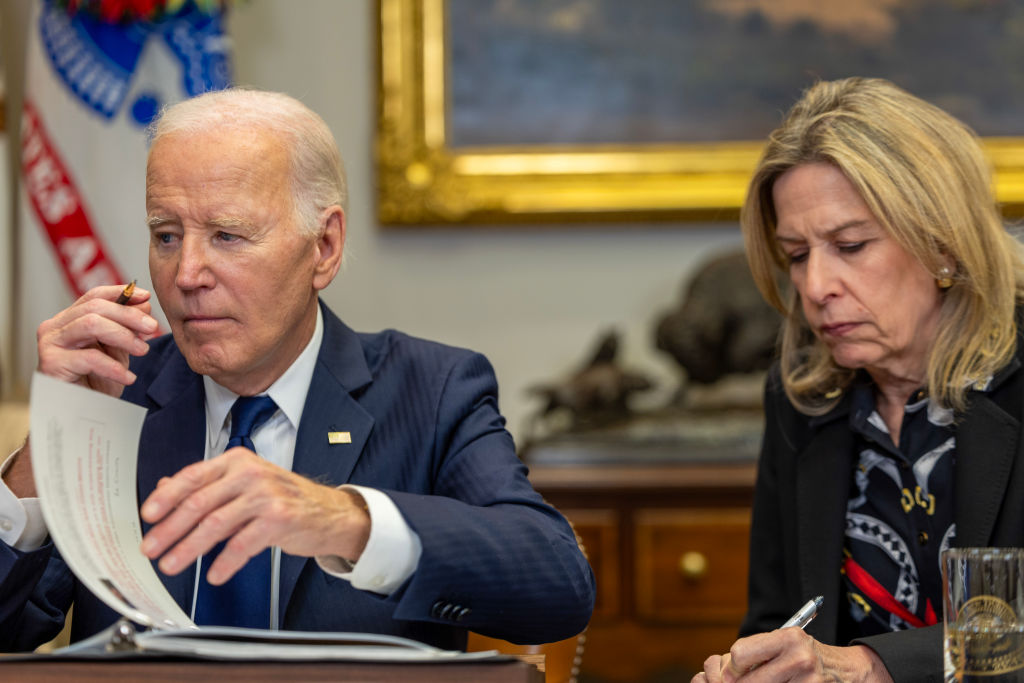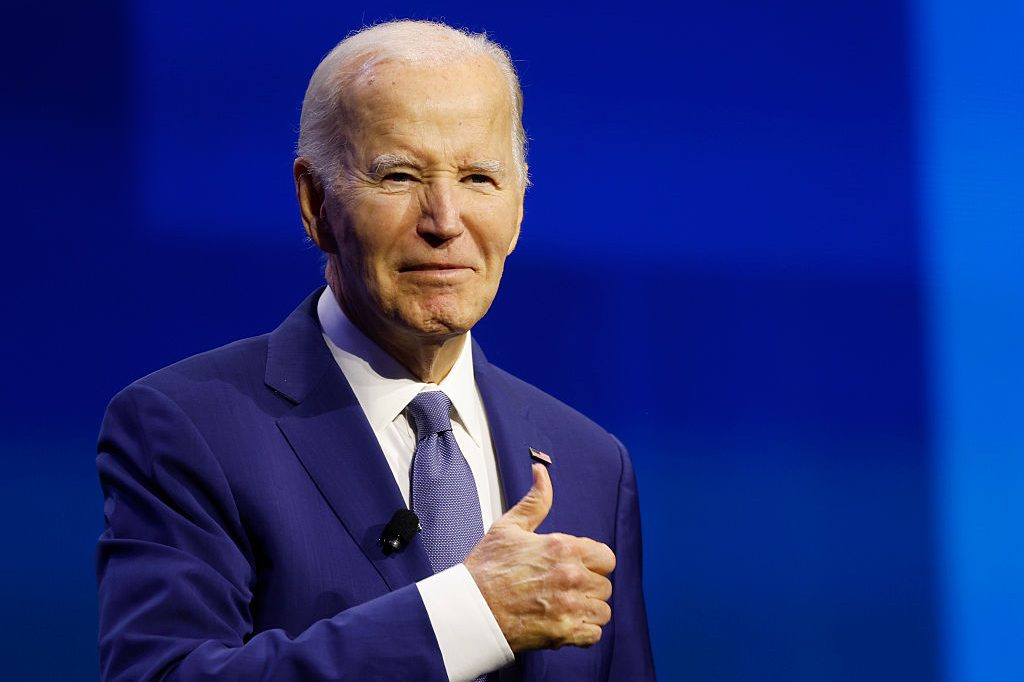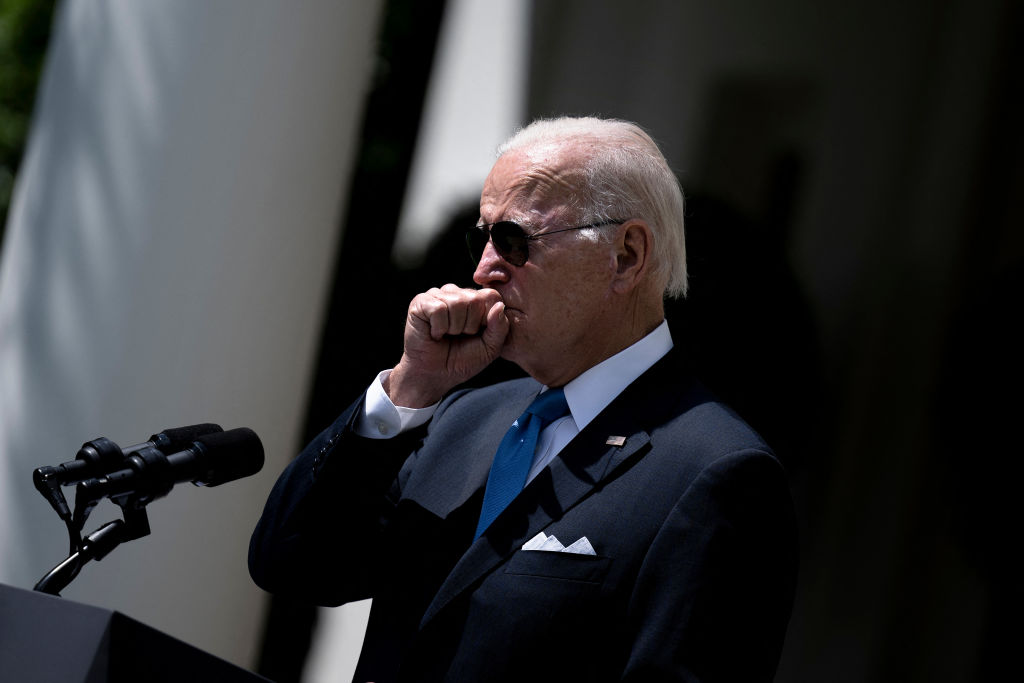‘In this present crisis, government is not the solution to our problem; government is the problem,’ proclaimed Ronald Reagan in his inaugural speech as American president. Forty years on, the leaders of the G7 have reversed this mantra. In Cornwall last week they declared that the government, and more specifically its $12 trillion of economic support, had not only been the answer during the pandemic but would continue to be the answer during the recovery. They committed ‘to support our economies for as long as is necessary, shifting the focus of our support from crisis response to promoting growth into the future’.
It would have been quite possible for leaders to have drawn a very different conclusion: bloated government bureaucracies have failed. Lavishly-funded public health bodies patted themselves on the back about their pandemic readiness; the US and the UK were ranked the two best prepared countries in the world, but in the event, they had planned for the wrong pandemic. The UK state then borrowed billions to finance a test-and-trace system that failed to stop a second wave. Salvation came from vaccines produced by private pharmaceutical companies. So the G7 might well have decided that it was time for more society, and less state.
This was never going to be Joe Biden’s agenda. He’s a newly-elected Democrat with a Democratic-controlled Congress. No surprise he is proposing a $6 trillion budget that would take federal spending to its highest prolonged level in postwar American history. The surprise is that, in Boris Johnson, Britain has a Conservative who is almost as keen to spend as Biden. Just as Reagan and Thatcher before them, they share an economic view. But their view is that government spending is a crucial part of the revival of America and Britain’s economies.
The British prime minister has gone out of his way not just to align himself with the Biden administration’s foreign policy agenda, but its domestic one too. In his closing press conference on Sunday he likened ‘leveling up’, his signature domestic policy, to Biden’s infrastructure plans — current price tag $1 trillion. This new consensus may set the shape of British government in this decade as much as the idea of spending restraint shaped the 1980s.
There are many factors behind the big spending zeitgeist. Perhaps the most important is the lure of low-cost borrowing: it has never been cheaper to expand the state. Once, a big government would mean incurring the political cost of high taxes. Now, money can be borrowed for next to nothing. Low interest rates mean the UK government is paying less money on debt interest, as a share of GDP, than at almost any time in history.
It is now possible for Johnson to pledge not to increase taxes while pushing on with HS2 and signing off expensive COVID plans. In the 1980s, Thatcher and Reagan had to pay crippling sums to finance government debt, with interest rates peaking at 15 percent. Today, 1.5 percent is considered expensive. If you can borrow billions at a tenth of the old cost, why not? This makes Johnsonian cakeism possible: keeping spending high while promising not to raise income tax, National Insurance or VAT.
The second big change is the thinking ushered in by the pandemic. On both sides of the Atlantic, governments have learned to take sweeping wartime-style powers, and citizens have learned to accept it, or even demand it. This mindset will not disappear with the end of the crisis. Rather it will endure and lead to a bigger role for government for some time to come in the same way that the second world war did.
The third factor — one that is hard to see changing any time soon — is demographics. As the population gets older and richer, it wants more spent on healthcare — and, importantly, care for the elderly. COVID has accelerated this. There is now a backlog of five million people in England waiting for knee or hip replacements or other hospital treatment. Clearing this is going to be expensive; leaked documents suggest it could cost up to £40 billion ($56.4 billion).
At the same time, the tragedy of what happened in care homes in the early stages of the pandemic has increased pressure on government to deliver on the commitment Johnson made on entering Downing Street two years ago: to ‘fix the crisis in social care once and for all’. If poorly paid agency staff seeded the virus into homes, it will have exposed the real cost of cheap care.
The most detailed plan on the table is Andrew Dilnot’s, which would limit what people would have to pay for their care to £35,000 ($49,000). Dilnot’s agenda would cost billions — but would not add any extra capacity, or improve any homes. It would just mean that the state expands, and takes on care homes. Some Tories think this would, in effect, create a second NHS. And, like the first NHS, its cost would rise over time. France, Germany and Japan have all seen the costs of the public contributions to their social care systems almost double in a decade.
Once, the Tory answer to all this would be simple: does the NHS need a bigger slice of the pie? Then bake a bigger pie. Low taxes, regulatory restraint and sound money have been the standard conservative remedy to expand the economy and pay for public services. But this ignores one of the problems that both Johnson and Biden are trying to solve: a sense that letting animal spirits prevail means growth that’s very unevenly spread. They share the feeling that some places have been left behind while others have surged, fueling the rise of populism and a sense of injustice that Johnson’s ‘leveling up’ is intended to address. This is an explicitly interventionist policy, based on the belief that government investment in these places can turn things around. ‘If the biggest idea in your government is addressing a market failure how free market a government can you be?’ asks one secretary of state.
COVID has also made governments more wary of the free market. If you had suggested to a minister two years ago that Britain needed a national plan for the supply of plastic gowns and surgical gloves, they would have given you a very strange look. But the pandemic has changed all that. At the peak of the crisis, national borders trumped markets. Even liberal democracies imposed export bans on medical supplies. Countries such as the UK that sourced only around 1 percent of their personal protective equipment domestically were at risk. Ministers remember all too well the nervous waits to hear whether planeloads of supplies had taken off or not.
Since the first wave, the UK government has been trying to increase the amount of homemade PPE. It also very deliberately ensured that as much of the Oxford-AstraZeneca supply chain as possible was located in the UK — and its caution has been amply vindicated. Any country that doesn’t have its own vaccine manufacturing capability has found itself in a very difficult position because of export bans and other restrictions. Wealthy Japan has managed to vaccinate only 15 percent of its population.
This emphasis on medical self-sufficiency and short supply chains points to a more active role for the state and a move away from the model of globalization that has dominated for the past 30 years. But there is a factor other than COVID driving this: China.
As the Western world has woken up to the true nature of the Chinese regime — and the threat it poses to the liberal order — leaders have started to become a lot more protectionist and wary about Beijing’s commercial reach. Given that Chinese companies are not independent of the state in the true sense of the word, there is clearly a risk in having them involved in critical national infrastructure. This realization has led to various countries, including the UK, phasing out or banning Huawei from their 5G networks. But this requires an active state policy to encourage national — or at least Western — champions who can build mobile phone networks and the like.
The era of technological competition with China also requires greater protection of intellectual property. The new National Security and Investment Act gives government more power to block foreign takeovers and investments in British firms. At the same time, the Chinese threat is also leading to Western governments spending more on research and development to try to maintain their edge over Beijing. In the US, the Senate has just passed a $250 billion US Innovation and Competition Act, designed to help maintain America’s technological lead over China. All this would, once, have been dismissed as 1970s protectionism. It’s now seen as 21st century realpolitik.
We also see, in this, a new contest of the great powers. Since the fall of the Soviet Union, the most significant security threat to the West has come from non-state actors — in other words terrorist groups such as al-Qaeda. This required a concentration on special forces and intelligence gathering. Difficult as this work was, it was considerably less costly than the level of defense spending that had been required during the Cold War to deter the Communist threat.
But the rise of China, with a military budget of $210 billion, means that the post Cold War ‘peace dividend’ is now over. The democratic world will have to spend considerably more on defense in the years to come. The UK has begun to recognize this; British military spending will rise at 4.2 percent in real terms between now and 2024-25 — the largest increase since the fall of the Soviet Union.
The post Cold War peace dividend has largely gone on more spending on healthcare. At the end of the Cold War, the UK spent 3.9 per cent of GDP on the National Health Service. Even before COVID hit, it was 7.1 percent — and rising. But the increase in defense spending will not be offset by a reduction in health spending. So the UK will end up spending more on both, and the state will get bigger.
When Thatcher and Reagan rolled back the state, they did so after huge debates about the nature of liberty. But now, the state is expanding without any similar discussion: here and worldwide. It is hard to look anywhere in the Western world and see a major economy pursuing a small-state lower-tax strategy. We appear to be in for a decade where the frontiers of the state are rolled forward across the Western world.
This approach is not, by definition, wrong. Johnson and Biden are confronting a very different set of problems to Thatcher and Reagan. But there are obvious risks in the idea that government action is the solution to almost every problem.
One thing is for sure: the bill for all this state spending will come in eventually. Governments may be able to borrow cheaply at the moment, but the last financial crisis showed just how quickly things can change. And the biggest question of all is whether it will work. Can government spending really prompt a new wave of technological innovation and bring growth to areas left behind by the modern economy? Or will all this turn out to be as much of a fallacy as the big-state arguments of the 1970s? It is a huge gamble — and one that Johnson and Biden are betting the future of the West on.
This article was originally published in The Spectator’s UK magazine. Subscribe to the World edition here.



